| Early Spring Date: | April 28 |
| Late Spring Date: | May 27 |
| Best Dates to See in Spring: | May 8-20 |
Spring: Bay-breasted Warblers are one of the most sought-after species at Monticello Park. They most commonly pass through during the second and third weeks in May. They are usually uncommon. In 2012, the only sightings during the spring (two birds) were on May 12. But in the spring of 2020, they were very common; from May 16 to 23, double-digit sightings were recorded each day.
Fall: On average, only a few Bay-breasted Warblers have been recorded each year at Monticello during fall migration. However, a greater number of fall sightings occurred in 2020 after the high numbers recorded at the park during the spring.
Where to See Them in the Park
Bay-breasted Warblers usually stay high in the canopy. Their song is high-pitched and can be difficult to hear. In 2017, they came down lower where they could be seen more easily; not many cankerworms were around, and songbirds had to seek alternative food sources closer to the ground. Bay-breasted Warblers sometimes go into the stream to bathe and drink.
Physical Description
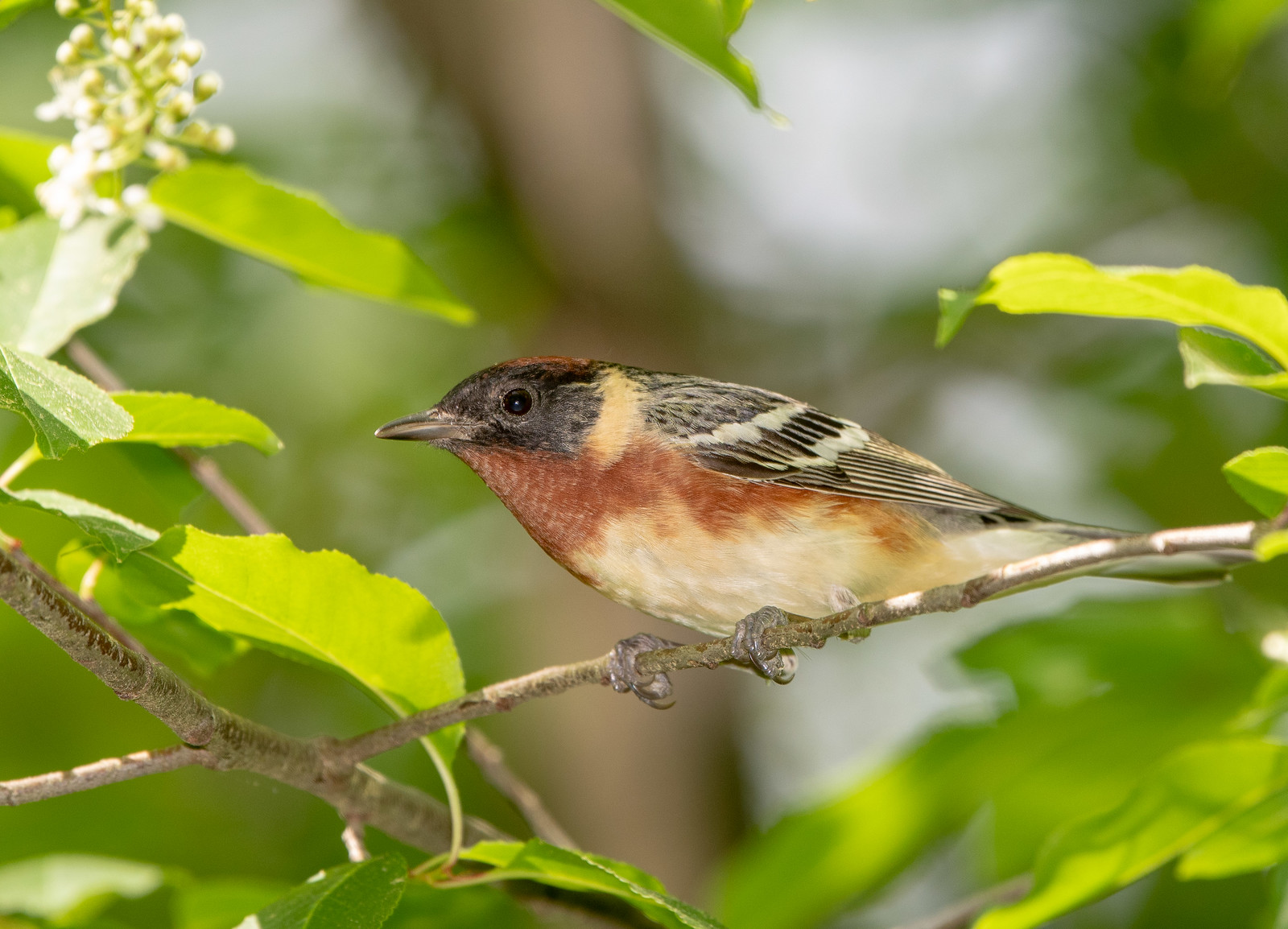
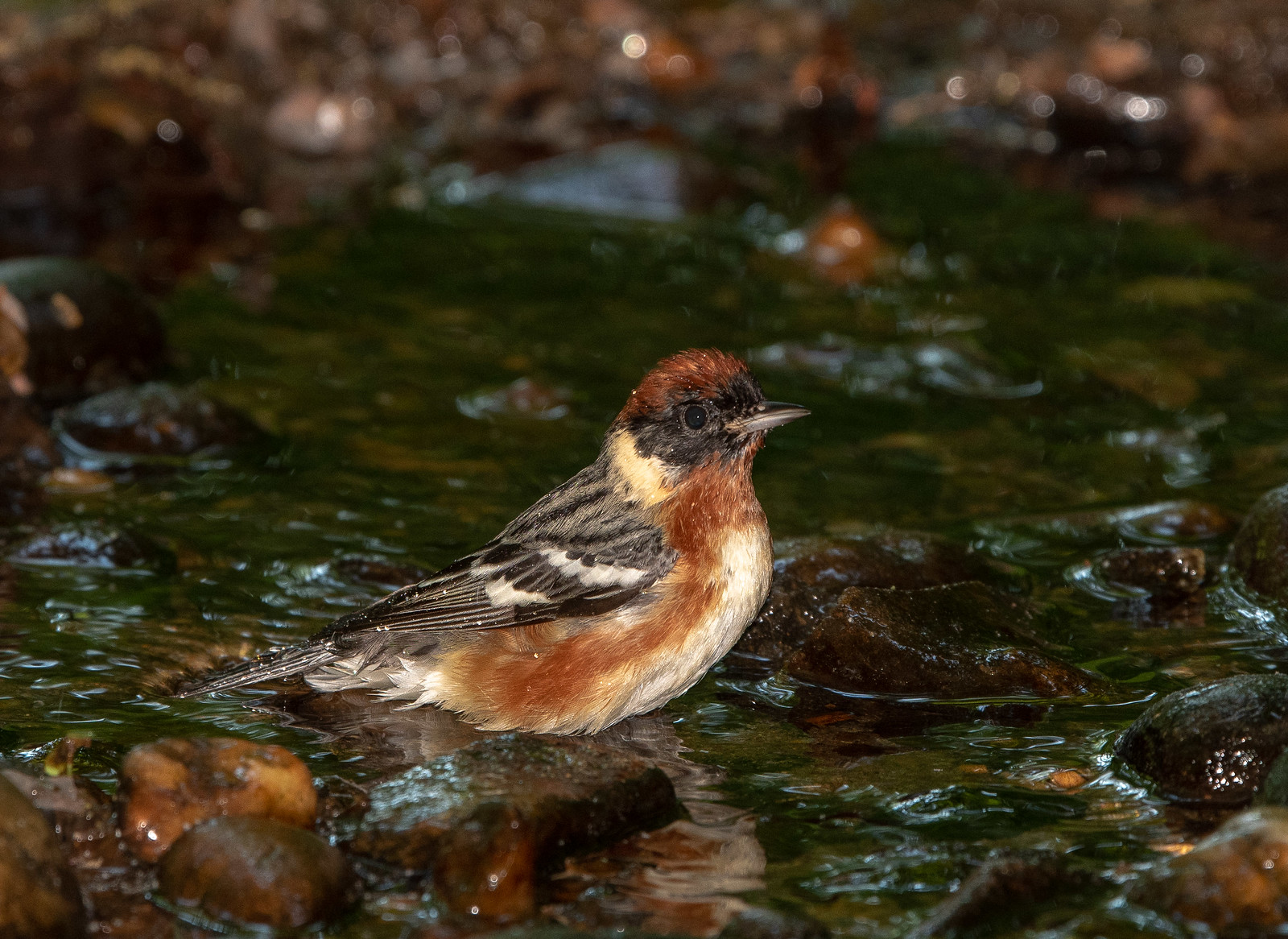
The male Bay-breasted Warbler is a striking bird. The cap, breast, and flanks are chestnut. The face and cheeks are black, and the side of the neck has a large buffy patch. The male has two white wingbars, and the back has black and gray streaks.
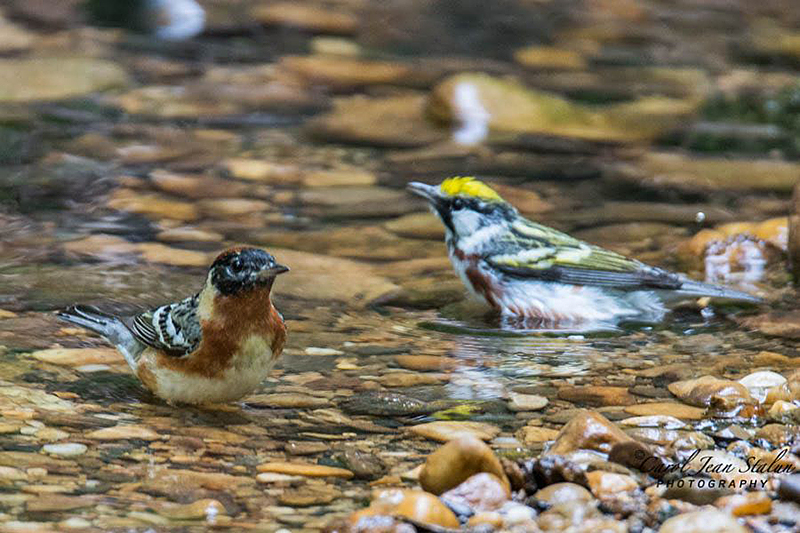
No other warbler who visits Monticello has both a chestnut cap and chestnut flanks. If you can see only the underside and the flanks, which often happens when birds are high in the trees, you might confuse a Bay-breasted with a Chestnut-sided Warbler. There is much more chestnut on the flanks of the Bay-breasted, and the Chestnut-sided does not have chestnut on the throat. The underparts of the Chestnut-sided are white, while the undersides of the Bay-breasted are tan. The back of the Bay-breasted is dark, while the back of the Chestnut-sided has a greenish-yellow tinge. The Bay-breasted is one of the larger warblers and looks a little bigger and bulkier. Bay-breasted Warblers generally are seen higher in the trees than the Chestnut-sided.
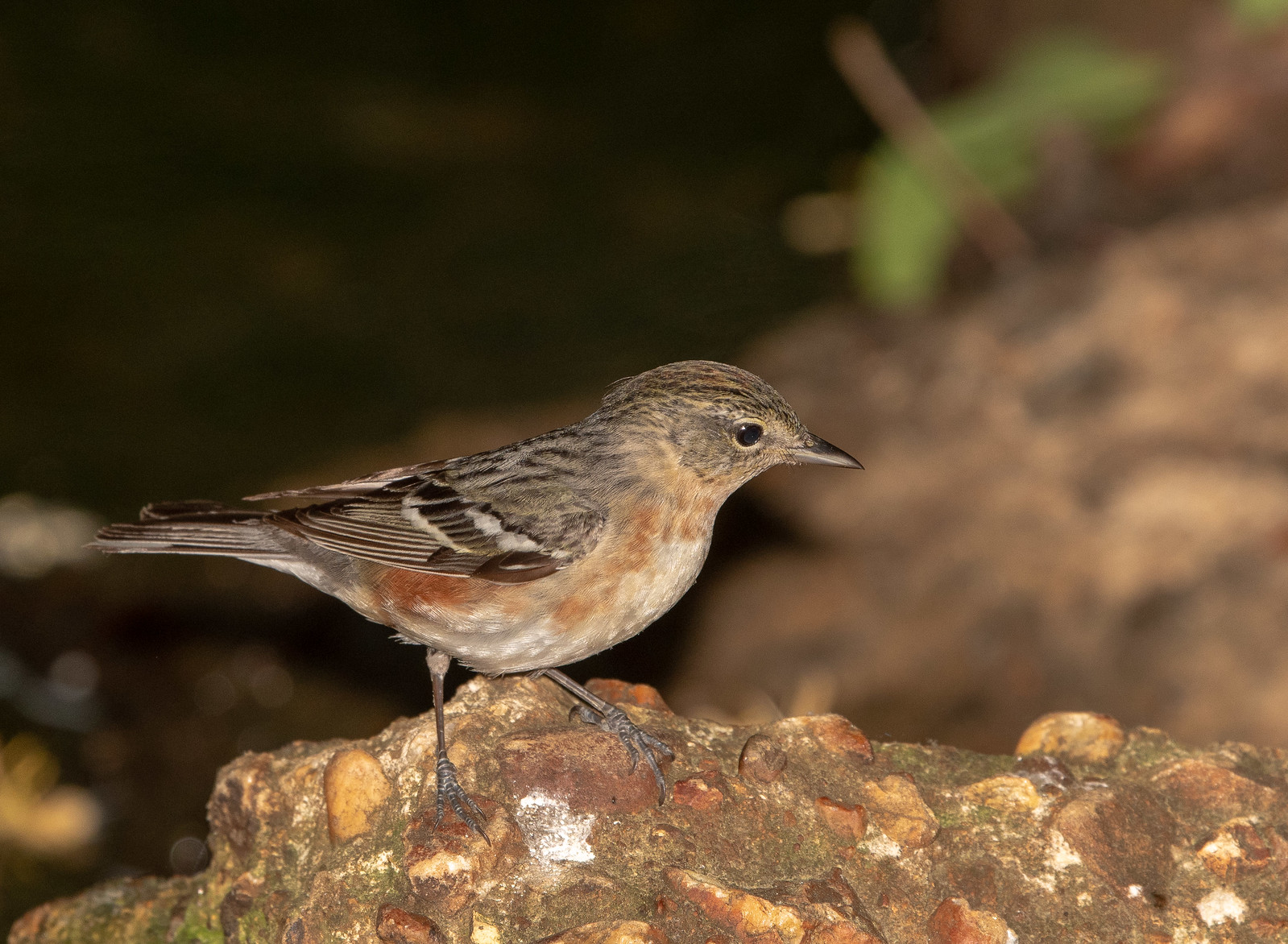
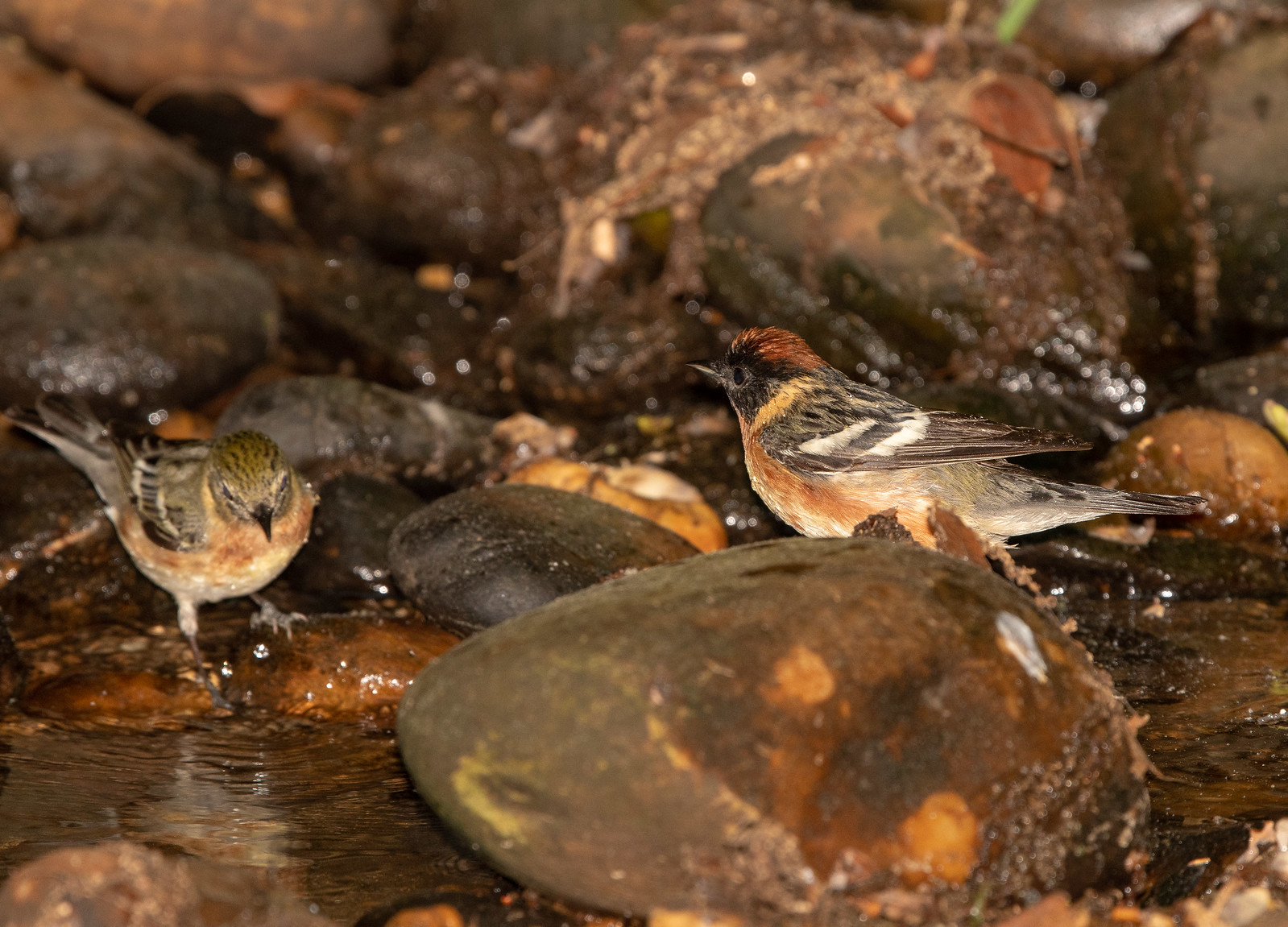
Not all Bay-breasted Warblers have unmistakable fieldmarks. Females have varying levels of chestnut on their cap, throat, and flanks. The more chestnut is present, the easier the bird will be to identify.
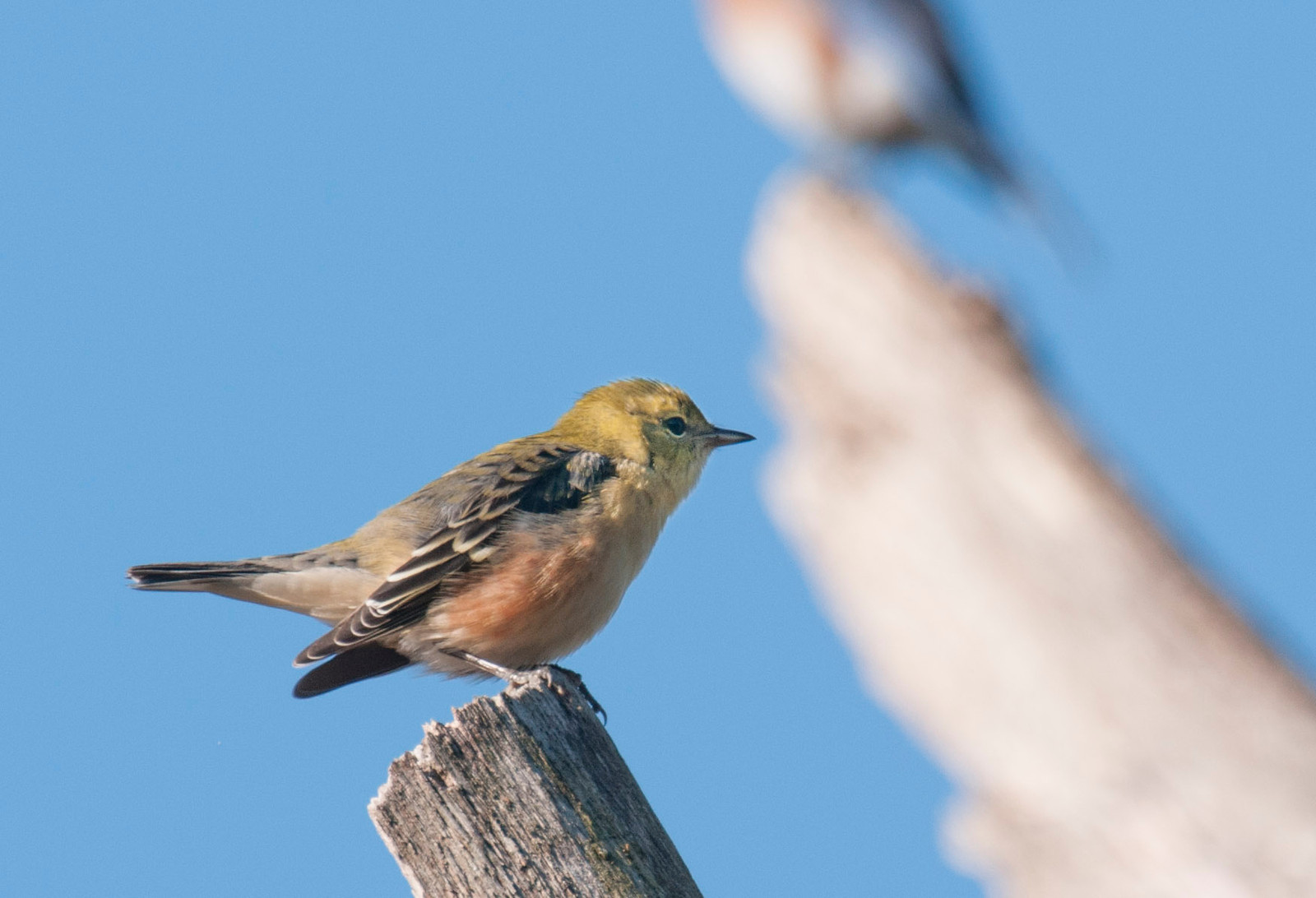
Fall: Fall Bay-breasted Warblers sometimes looks so much like fall plumage Blackpoll Warblers that they are referred to as Baypolls. If you can see the leg color, Bay-breasted Warblers have dark legs, while Blackpolls have yellow legs. Fall Blackpolls usually have some streaking on their flanks, while fall Bay-breasted Warblers do not. Adult male Bay-breasted Warblers still have chestnut on the flanks and possibly on the crown. First-fall males are paler, but usually still have chestnut on the flanks. Fall Bay-breasted Warblers often have a buffy undertail, but some do not. A Baypoll with a buffy undertail is a Bay-breasted, but one with a white undertail could be either species.
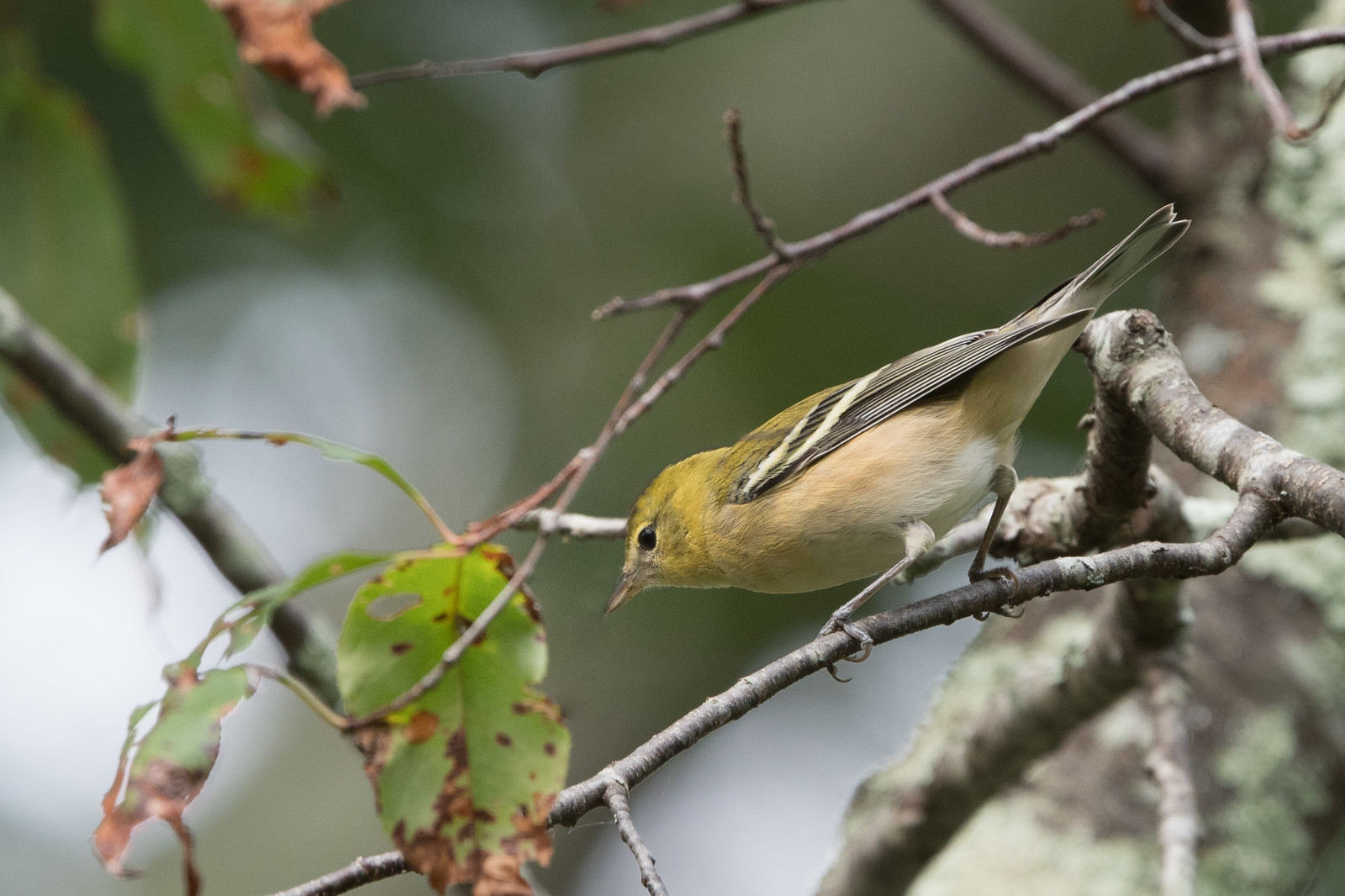
Fall adult females have no chestnut on the crown, but might have some on the flanks. First-fall females lack chestnut on the crown and flanks, and they show green on the rump. They can be difficult to distinguish from fall Blackpoll and Pine Warblers.
Vocalizations
The song of the Bay-breasted is a weak series of two-note phrases. The similar phrases of the Black-and-white Warbler are not loud, but the song of the Bay-breasted is even softer, as one would expect from a bird who spends a lot of time in the canopy where sound carries well.
Hear the vocalizations of the Bay-breasted Warbler.Notes
Bay-breasted Warblers breed in the boreal forests of Canada and Northern New England. They are a species whose population rises and falls based on their abililty to find spruce budworms on their breeding grounds. The color "bay" is reddish-brown, and it is used more frequently to describe horses. It is mentioned in the famous old minstrel song "Camptown Races", by Stephen Foster. The song has the lines, "I'll bet my money onde bob-tail nag, Somebody bet on de bay". Camptown is a village in northeastern Pennsylvania.
Origin of Names
Common Names: Bay-breasted from the plumage. The New World Warblers were named for their similar appearance to European warblers, to whom they are not related. Most of the New World warblers do not warble (sing continuously with notes that change frequently).
Genus Name: Setophaga means moth eating.
Species Name: Castanea is Latin for chestnut, from the color of the breast, cap, and flanks.
Bay-breasted Warbler video footage
Return to the Index
